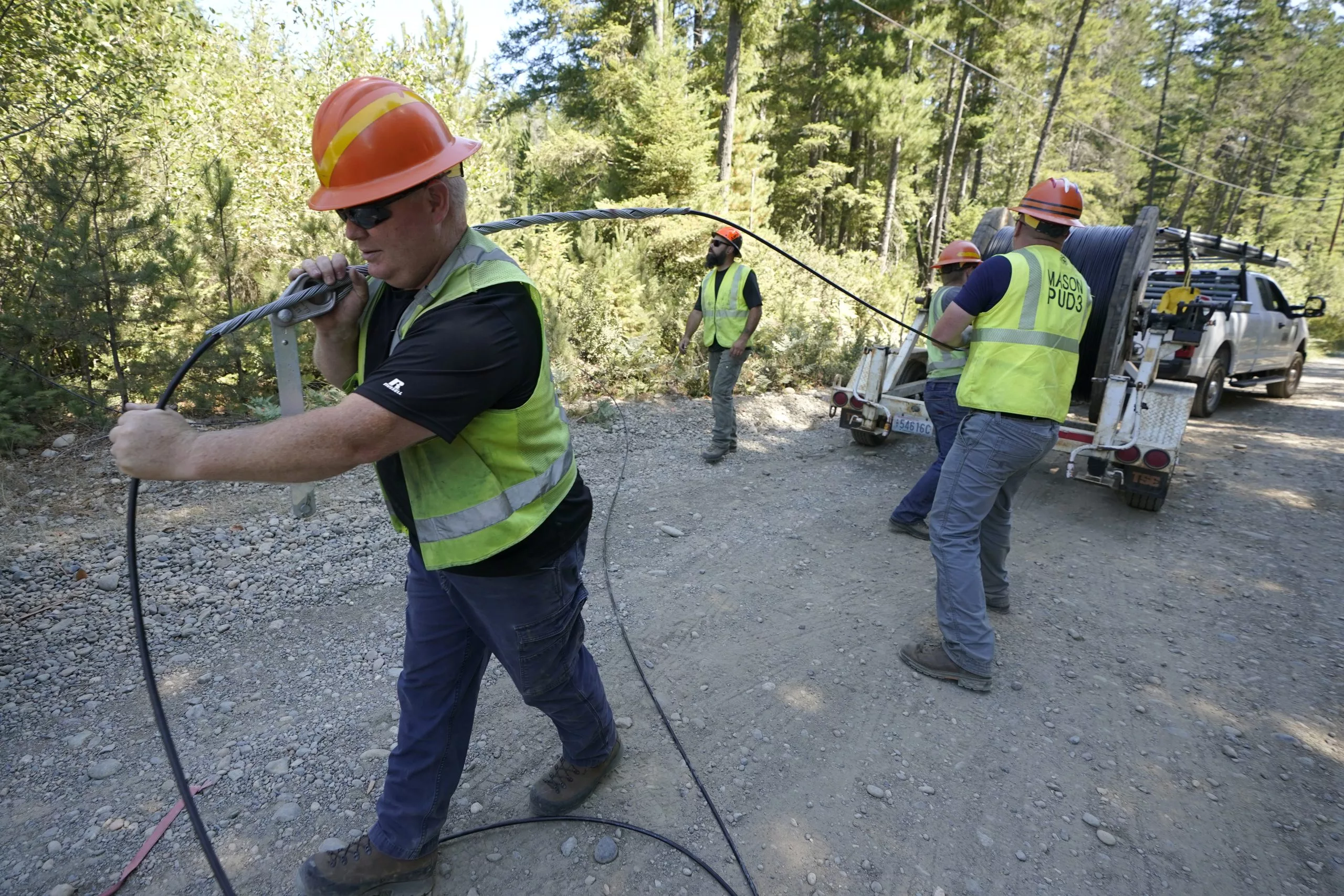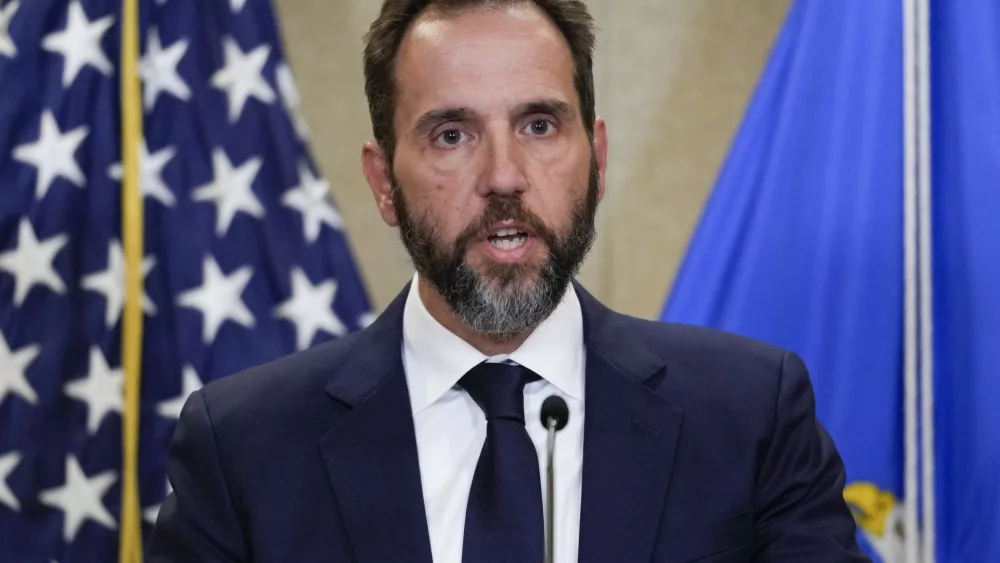WASHINGTON (AP) — Four days before Election Day, the government will issue its final snapshot of hiring and unemployment in the United States after a presidential race in which voter perceptions of the economy have played a central role.
Yet Friday’s report will include some of the most distorted monthly employment figures in years, with job growth having been held down temporarily in October by hurricanes and worker strikes.
So just as voters, politicians and Federal Reserve officials are looking for a clear read on the economy, they instead will get a muddied one. The report arrives as Republican allies of Donald Trump, seeking to cast doubt on the economy’s health, have sought to undercut confidence in the credibility of the monthly jobs reports.
Trump and his supporters have repeatedly attacked the Biden-Harris administration for the spike in inflation that peaked two years ago before steadily cooling. Despite healthy job growth, few layoffs and low unemployment, Trump has also charged that the United States is a “failing nation” and has vowed that his plan to implement sweeping tariffs on all imported goods would restore millions of manufacturing jobs.
Typically, the monthly jobs data helps clarify how the economy is faring. But economists estimate that Hurricanes Helene and Milton, combined with the effects of the ongoing strike by Boeing machinists, will have reduced hiring last month by a significant number — roughly 60,000 to 100,000 jobs, most of them only temporarily.
All told, economists have estimated that Friday’s report will show that just 120,000 jobs were added in October, according to the data provider FactSet. That is a decent number, though less than half of September’s unexpectedly robust 254,000 gain. The unemployment rate is expected to remain at a low 4.1%.
Once the impact of the hurricanes and strikes are considered, those figures would still point to a solid job market, one that has shown surprising durability, buoyed by healthy consumer spending, in the face of the Fed’s high interest rates.
“This is a really incredibly resilient economy,” said Jane Oates, a former Labor Department official during the Obama administration. “People are spending. That’s what’s keeping this economy going.”
Yet there may be other effects that the government has a harder time measuring. The Labor Department, for example, has said it thinks the strike by Boeing machinists, along with a smaller walkout by some hotel workers, reduced job growth by 41,000 in October. But some of Boeing’s suppliers may also have shed jobs as the strike cut into their sales. It’s not clear how much of an impact those job losses might have had on the October employment figures.
At the same time, the hurricane might have cost fewer jobs than economists expect. A worker would have to lose pay for an entire pay period — often two weeks — for their job to be considered lost in the government’s data. Though many workers in North Carolina were likely out of work that long, it’s not clear that in Florida, which has had more experience with hurricanes, employees would have missed that much work, Oates said.
Economists at UBS noted that the big amusement parks in Orlando — Walt Disney World, Sea World and Universal — were closed only for two days after Hurricane Milton hit. And in some states, people will be hired as part of the cleanup and rebuilding efforts.
Friday’s jobs report will be the last major snapshot of the economy before the Fed’s next meeting Nov. 7, two days after the election. Most economists expect the Fed to reduce its benchmark rate by a quarter-point, after an outsize half-point cut in September.
If the jobs report suggests that hiring stayed healthy in October excluding the effects of the hurricanes and strike, Republican political figures may question its credibility again. Last month, when the government reported that hiring had jumped unexpectedly in September, Sen. Marco Rubio, a Republican from Florida, made the baseless charge that the report was “fake.”
Yet no mainstream economists share such skepticism. Other indicators — such as the number of people seeking unemployment benefits, data that is compiled mostly by the states — also point to a still-solid job market.
“I’ve been horrified by the degree to which politicians have made that argument,” said Julia Pollak, chief economist at ZipRecruiter. The Labor Department’s Bureau of Labor Statistics, which produces the jobs report, “is the most transparent government agency on the planet,” she said.
Trump and other critics have seized on the revisions that are often made to the government’s initial estimates as evidence for their false claim that the Biden-Harris administration has manipulated the data. In August, the BLS said it expected to downgrade its estimate of total jobs in the United States as of last March by 818,000, or about 0.5% of the total. During the presidential debate in September, Trump asserted that the revision reflected “fraud” in the employment data. Yet under his own administration, the BLS revised job counts downward in 2019, by 514,000.
Erica Groshen, a senior economic adviser at Cornell University and a former commissioner of the BLS, explained that such revisions are “not a bug; they are a feature” of the government’s data-gathering.
“BLS wants to get as much timely information out there as possible, but it also wants to have the information be as accurate as possible,” Groshen said.
The way it does that is to release early data, based on surveys of tens of thousands of businesses. Revisions are subsequently made based on late-arriving data from more companies and from actual job counts derived from unemployment benefit agencies.
Trump’s running mate, Sen. JD Vance, has often sought to undercut positive hiring data by arguing that all the jobs created in the past year have gone to immigrants.
That claim rests on the fact that the number of “foreign-born” people with jobs, as BLS refers to them, increased 1.2 million in September from a year earlier, while the number of native-born workers with jobs fell by about 800,000.
Yet the “foreign-born” category includes people who have been in the United States for years, including from childhood, and who are now citizens, as well as recent immigrants, both authorized and unauthorized.
More significantly, native-born Americans have been retiring in droves, one reason why so many employers have often had difficulty filling jobs. As the huge baby boom generation ages, the proportion of Americans ages 65 and older has jumped to 17.3%, up from just 13.1% in 2010, according to Census Bureau data.
And the unemployment rate for native-born Americans, at 3.8%, is actually lower than the jobless rate for foreign-born workers, at 4.2%.
Brought to you by www.srnnews.com







